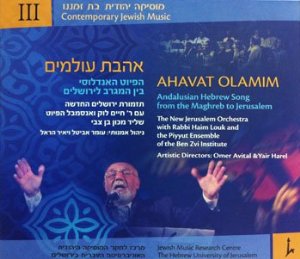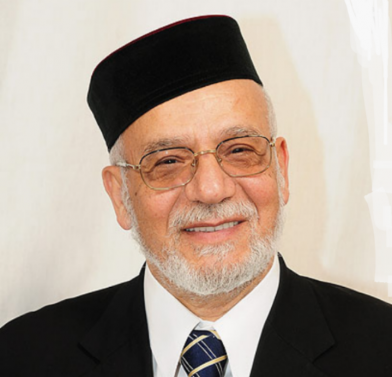2012
D. Yearning, For Where? - Tasdir Sikka
The "Yearning" section is the longest and most complex in Ahavat 'olamim. It is divided into two parts- first a tasdir in nuba Sikka, which develops into the second part, a tasdir in nuba Mazmum. The nuba Sikka has shared modal characteristics with one of the main scales of Spamish flamenco. Thus to many listeners, it symbolizes the historical connection between the urban music of northwest Africa and the Andalusian tradition of Spain. The Tasdir begins with an instrumental introduction divided into several segments. An accordion solo (by Armond Sabah) stands at the focal point of the first segment, which introduces the nuba. During the 20th century, players of Andalusian music willingly adopted this next part of the introduction, we hear an orchestral composition (tushya) presenting the main motifs that appear un the remainder of the tasdir. A short vocal introduction, consisting of two verses from the 118th Psalms, several as preparation for the qeddushah (Sanctification), one of the central prayers in the Jewish liturgical services. R. Haim Louk sings it in a Spanish melody from the zarzuela (light Spanish opera) "La leyenda del beso" (The legend of the kiss), composed by Reveriano Soutullo Otero (1880-1934) and Juan Vert Carbonell (1890-1931), first performed in Madrid (February 18, 1924). The qeddushah is based on the first part of an intermedio (instrumental segment) situated between the scenes of the last act in order to permit the stagehands to change the scenery. This intermedio has been released as an independent piece on various commercial recordings throughout the Hispanic world, mainly in the early 1950s, and we may assume that the Moroccan paytanim and cantors adapted the melody from one of these recordings. According to Yossi Louk on the website "An Invitation to Piyut" (Shitufiyyut tab), the initiator of this adaptation may have been cantor and teacher Yitzhak Kedoshim, choir conductor at Em Ha-Banim school in Casablanca, where R. Haim Louk studied.
The adaptation for orchestra creates a variegated texture, an echo of the choruses of angels, the ofanim and serafim recalled in the qeddushah prayer. From here. the tasdir continues to a piyyut from the bakkashot -"Sgulati ve-or eynai" by a poet named Salem- included in early collections of piyyutim from Algeria. The melody arouses longing- the longing for the Land of Israel expressed by the previous generations, intermingled with the longing of a new generation of Israelis for Jewish culture from Spain and the Maghreb.
In the second part of this section, we enter a new modal area, through modulation to nuba Mazmum, which has a clear major character. After a short introduction (kemanja solo), the ensemble performs two piyyutim: "Lekha ha-El", a mystical piyyut about the ten kabbalistics sefirot, in ta melody set to 5/4 meter (an unusual one in Andalusian music). After this, in a different melody, we hear a segment beginning with the words Smehim be-tzetam, taken from the ancient piyyut "El adon 'al kol ha-ma'asim," which is part of the Shaharit (morning) service on Shabbat. Thematically, this text closes the circle that began with the opening qeddushah of the tasdir, and describes the heavenly song during the creation of the celestial lights. The melody is performed to a rousing 6/8 meter (insiraf), the closing meter in most of the Andalusian tasdir. The closing segment is also performed to this continuosly accelerating tempo. In it, the classic Arabic qasida "Raytu al-hilal" (translated into Hebrew by Almog Behar) is performed in alternation with the piyyut "Yefefiyah livavtini" (by unknown author), adapted to the melody of this Arabic song. At the end of this characteristic rhythmic progression, we enjoy a surprising epilogue (saxophone solo- Greg Tardy).






